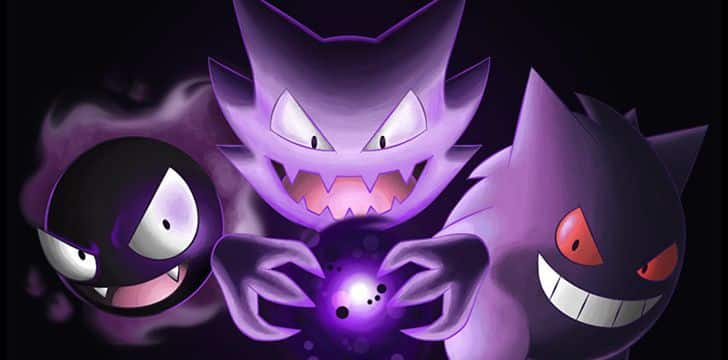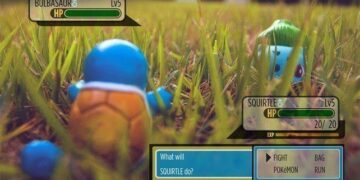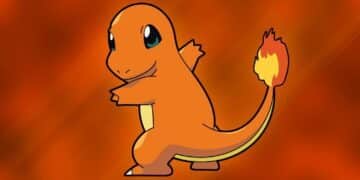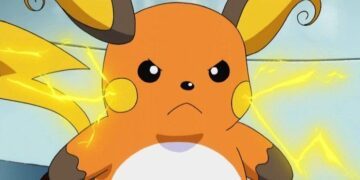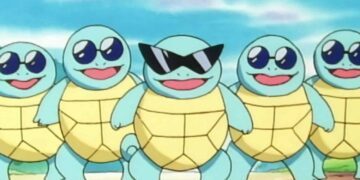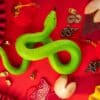In the first Generation of Pokémon, everybody struggled with the Psychic Gym in Saffron City.
That Kadabra was just so fast and deadly that it would wipe the floor with almost everything.
Simply put, Kadabra was a Pokémon super-weapon so early in the game.
So for most trainers, the best way to fight it was simple: get a super-weapon of your own.
For every smart-minded trainer, that super-weapon was a Haunter.
Located in the Pokémon Tower, this ghastly Ghost-type Pokémon is one of the most beastly Pokémon knocking about in the first Generation.
Most importantly, it was a Ghost-type making it super effective against Sabrina’s Psychic types.
So, other than fond childhood memories of seeing Kadabra faint at the hands of your Haunter, what do you actually know about the Pokémon itself?
Well, read on to and discover the 15 most spooky facts about one of my all-time favorite Pokémon, Haunter.
In the anime, Haunter made its first appearance when Ash Ketchum befriended one in Episode 22, The Tower of Terror, so he could defeat Sabrina and her Kadabra. Instead of battling Kadabra, Haunter goofs about and stays with Sabrina after helping Ash succeed in earning his badge.
In the Pokémon Red & Blue beta, Haunter’s prototype was called “Spectre.” The Pokémon Trainer’s Survival Guide also references Haunter as Spectre by accident.
Because it is able to slip through walls, people think that Haunter is from another dimension.
In the Pokédex entries for Haunter, it says that Haunter’s tongue is capable of causing paralysis, violent shakes, and even draining the life out of somebody until they die.
Haunter is able to disguise itself as a floating purple orb to hide from unsuspecting victims.
Up until Generation VII, Haunter’s final evolved form, Gengar, had the ability Levitate. However, in Generation VII this was changed to Cursed Body, yet Haunter still retains the ability Levitate.
Haunter appears in all Pokémon games and can be caught in the wild in every Pokémon game except for Pokémon Ruby and Sapphire and Pokémon Black and White.
At 0.2 lbs, Haunter is tied with Gastly, Flabébé, Cosmog, and Kartana as the lightest Pokémon.
Haunter and its evolutionary family are the only Pokémon to have the type combination of Ghost and Poison. Because of this, Haunter and its relatives are the only Poison-type Pokémon to be weak to Dark-type moves.
Although Haunter is now a dual-type Ghost and Poison Pokémon, it was originally just a Ghost-type Pokémon in the first Generation of games when all Pokémon were only single-type Pokémon.
The name “Haunter” is both the single and plural name for this Pokémon. E.g. “Just the one Haunter, actually” and “No luck catching those Haunter then?”
Haunter is the Pokémon with the most cry changes throughout the series, having been changed in generations II, III, and VI.
Haunter and its family’s design are possibly based on the Dila, a spirit from Filipino mythology that passes through walls and then licks certain people to death.
Haunter’s name is a combination of the words “haunt” and “hunter.”
Just as there is a fan theory that Gengar is the ghost of a Clefable, there is a fan theory that Voltorb is a Haunter trapped in a Pokéball. The theory stems from the fact that the two have similar eyes, and when you put Haunter’s eyes on a Pokéball they look rather alike. The theory goes that a Haunter tried to possess a Pokéball and became trapped. The Haunter then became enraged and took over the Pokéball itself as it couldn’t escape, this is why the release button on the Pokéball disappears. The theory also states that Voltorb’s explodes because the Haunter trapped within is escaping.

